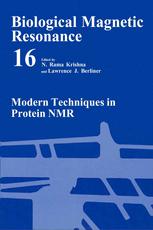

Most ebook files are in PDF format, so you can easily read them using various software such as Foxit Reader or directly on the Google Chrome browser.
Some ebook files are released by publishers in other formats such as .awz, .mobi, .epub, .fb2, etc. You may need to install specific software to read these formats on mobile/PC, such as Calibre.
Please read the tutorial at this link: https://ebookbell.com/faq
We offer FREE conversion to the popular formats you request; however, this may take some time. Therefore, right after payment, please email us, and we will try to provide the service as quickly as possible.
For some exceptional file formats or broken links (if any), please refrain from opening any disputes. Instead, email us first, and we will try to assist within a maximum of 6 hours.
EbookBell Team

5.0
30 reviewsVolume 16 marks the beginning of a special topic series devoted to modern techniques in protein NMR, under the Biological Magnetic Resonance series. This volume is being followed by Volume 17 with the subtitle Structure Computation and Dynamics in Protein NMR. Volumes 16 and 17 present some of the recent, significant advances in biomolecular NMR field with emphasis on developments during the last five years. We are honored to have brought together in these volumes some of the world’s foremost experts who have provided broad leadership in advancing this field. Volume 16 contains advances in two broad categories: the first, Large Proteins, Complexes, and Membrane Proteins, and second, Pulse Methods. Volume 17, which will follow covers major advances in Computational Methods, and Structure and Dynamics. In the opening chapter of Volume 16, Marius Clore and Angela Gronenborn give a brief review of NMR strategies including the use of long range restraints in the structure determination of large proteins and protein complexes. In the next two chapters, Lewis Kay and Ron Venters and their collaborators describe state-of-t- art advances in the study of perdeuterated large proteins. They are followed by Stanley Opella and co-workers who present recent developments in the study of membrane proteins. (A related topic dealing with magnetic field induced residual dipolar couplings in proteins will appear in the section on Structure and Dynamics in Volume 17).